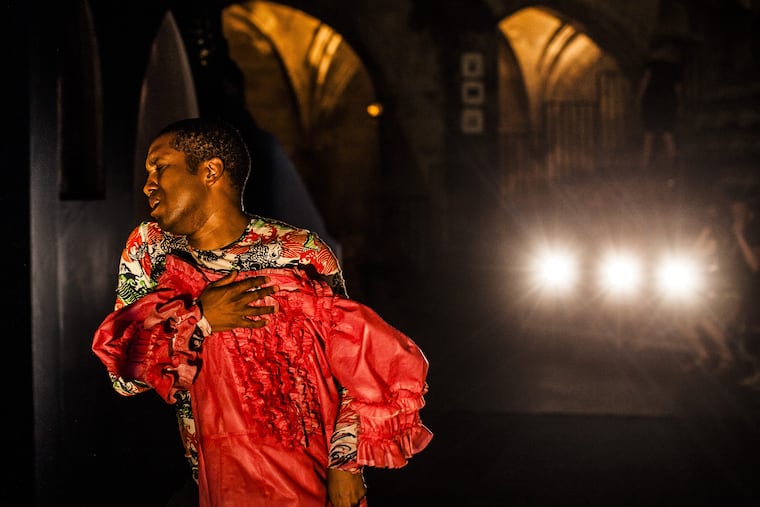Famous for voguing, Trajal Harrell now confronts the hoochie coochie shows of the South
In his Fringe Fest show "Caen Amour." choreographer Trajal Harrell explores his fascination with the traveling shows his father's friends attended — and directly confronts their racism, sexism, and other exploitations.

As a youngster growing up in rural Georgia, Trajal Harrell enjoyed accompanying his father to traveling fairs that would pass through the Southern countryside. At some point in the night, though, he'd be entrusted to a group of friends while his father joined other men in an off-limits tent advertised by an alluring woman.
"As I got older, I started to realize that they were going to see naked ladies dance," Harrell recalls. "They were going to see a hoochie coochie show, and that was my first understanding of dance as a spectacle. Because I never actually saw it and we never talked about it, it's always something that's been lurking in my consciousness."
Now an acclaimed dancer and choreographer who splits his time between Georgia and Athens, Greece, Harrell will explore his fascination with hoochie coochie shows in his piece Caen Amour at the Fringe Festival Thursday through Saturday. The title echoes the cheesy, faux-exotic trappings of actual hoochie coochie performances, which first took off in the world fairs of 19th-century Europe and America by offering Western audiences a tantalizing glimpse at counterfeit versions of Middle Eastern dance.
Unrecorded history
"This history is related to early modern dance, but of course you'll never find it in the history books," Harrell says. "Most of my work deals with the historical imagination, and what interests me about hoochie coochie is that for me it's an imaginative encounter. Yes, it has elements of the forbidden, the mystery, the unknown, but … I had to put my imagination in operation to encounter it."
Thinking about the dance's history also inevitably led Harrell to the controversial attitudes it represents.
Caen Amour directly confronts audiences with images that evoke racist, sexist, orientalist, and colonialist iconography of the past — and their echoes in the present. "What's interesting to me is how the spectator begins to deal with these images," Harrell says, "and how this dance form becomes a way to construct various images in our mind.
"All of that happens out of a choreography that the audience actually participates in," he says. "You don't just sit down and watch this show."
Unexpected answers
Caen Amour is danced primarily by male dancers performing as women in order to take a look at the way in which women are represented in art. The answers can be unexpected, as in a story Harrell heard from one man during his research.
"He had seen a hoochie coochie show when he was a young man in Ohio," Harrell says. "He walked in to a tent and all the men were standing there, and the lady came out with a phonograph, took all of her clothes off, and just stood there, not moving. He said the men were half-terrified. To me, this was such a modernist gesture. Finding the cracks and gaps in history is what fuels the work that I do."
The dance history Harrell is investigating in Caen Amour dovetails in fascinating ways with the major influences in his work, namely voguing and Japanese butoh dance.
He explored the stylized posing of fashion models in his signature series of works, Twenty Looks or Paris is Burning at the Judson Church. The folk traditions of butoh entered his work during a two-year residency at New York's Museum of Modern Art.
Today’s hot-button issues
Caen Amour premiered in 2016, anticipating this year's hotly debated issues of cultural appropriation and the representation of women. "We always have to remember that the issues that come into the popular imagination now people have been working on for years," he says.
"More people are now hearing about it, but that stands on the work of activists, theorists, historians, and many people who've been working for decades and sometimes even centuries," Harrell says.
"This is an exciting time to be making work because of the exciting things that are happening in our culture, in which people are finally asking some very, very important questions about inequality."